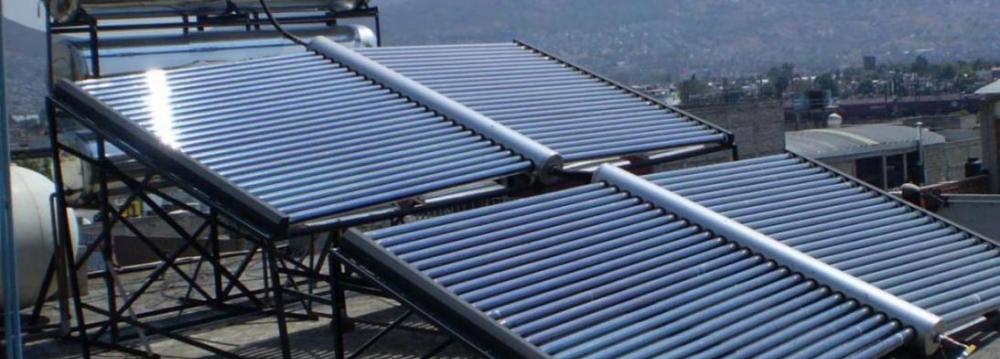Many industrialized nations are switching to the affordable and clean solar energy, but what is the share of Iran in view of its high level of insolation, thanks to its geographical location?
The Persian daily Forsat-e Emrooz has weighed the use of solar water heaters in one of its “Investment Opportunity” reports.
As one of the most rapidly growing renewable sources of electricity and heating, solar energy has several advantages over other conventional forms of energy including, but not limited to, reduced dependence on fossil fuels and numerous environmental advantages.
Solar water heating refers to the conversion of sunlight into renewable energy for heating water using a solar thermal collector. SWH systems tap into various technologies that are increasingly used worldwide.
In a close-coupled SWH system, the storage tank is horizontally mounted immediately above the solar collectors on the roof. No pumping is required, as the hot water naturally rises into the tank through thermosiphon flow. In a pump-circulated system, the storage tank is ground- or floor-mounted, and is below the level of collectors: a circulating pump moves water or heat transfer fluid between the tank and the collectors.
Solar panels or photovoltaic panels are needed to use solar water heaters. Solar PV panels constitute the solar array of a photovoltaic system that generates and supplies solar electricity in commercial and residential applications.
Germany, Spain, the UK, Italy, the US, China and Australia are pioneers in using solar panels. Few countries, such as Iceland and New Zealand, supply all their energy through renewable energies and the use of solar water heaters has become mandatory in some countries.
However, when it comes to Iran, the technology of solar panels has not been indigenized. Solar panels are only used in remote villages where it is not economically viable to provide electricity connection.
Many Iranians are not aware of the efficiency of solar panels–partly because of poor culture building–despite the fact that 90% of the area of the country have on average 300 days of sunshine a year.
Also, the low price of natural gas in Iran is to blame for residents’ reluctance to shift to solar water heaters. It is no surprise that consumers will not consider other alternatives when cheap energy is at their disposal.
Undoubtedly, producers will need government aid to provide the photovoltaic panels. Of course, incentives such as government subsidies play a major role in making solar power affordable.
Government officials announced last year that half of the costs of solar water heating installation will be covered by subsidies. Except for a handful of small towns, the proposal has not been widely accepted.


